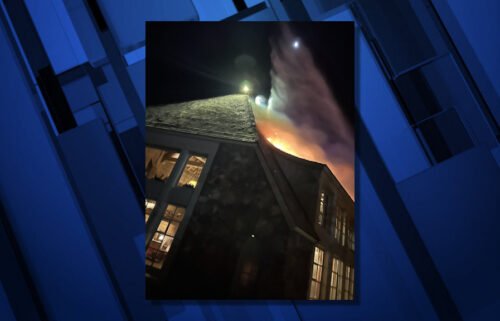NASA launches new x-ray telescope designed to unravel mysteries of black holes

The satellite is scheduled to launch around 1 a.m. ET aboard a SpaceX Falcon 9 rocket from NASA's Kennedy Space Center in Florida.
By Ashley Strickland, CNN
We’re about to get a new perspective on some of the most extreme objects in the universe. In the early morning hours Thursday, NASA launched its Imaging X-ray Polarimetry Explorer mission, or IXPE, to measure X-rays released by black holes and neutron stars.
The satellite successfully launched at 1 a.m. ET Thursday aboard a SpaceX Falcon 9 rocket from NASA’s Kennedy Space Center in Florida.
The spacecraft, which is the collaborative effort of NASA and the Italian Space Agency, carries three telescopes. While IXPE isn’t as big as NASA’s Chandra X-ray observatory, it is the first space observatory of its kind. The satellite will be able to see an often overlooked aspect of cosmic ray sources called polarization.
Advances in X-ray astronomy
“The launch of IXPE marks a bold and unique step forward for X-ray astronomy,” said Martin Weisskopf, IXPE’s principal investigator, in a statement. “IXPE will tell us more about the precise nature of cosmic X-ray sources than we can learn by studying their brightness and color spectrum alone.”
X-rays are a highly energetic wavelength of light that are born from extremes. In space, this includes powerful magnetic fields, collisions between objects, explosions, scorching temperatures and rapid rotations. This light is practically encoded with the signature of what created it, but Earth’s atmosphere prevents X-rays from reaching the ground. This is why scientists rely on X-ray telescopes in space.
Polarized light also bears the unique stamp of its source and what it passed through on the way. While waves of light can vibrate in any direction, polarized light only vibrates in one direction.
Understanding extreme cosmic objects
Using IXPE to study the polarization of cosmic X-rays could help scientists better understand the remnants of exploded stars, like black holes and neutron stars, their environments and how they produce X-rays. This perspective on extreme cosmic objects could also reveal the answers to larger fundamental questions about physics.
“IXPE will help us test and refine our theories of how the universe works,” Weisskopf said. “There may be even more exciting answers ahead than the ones we’ve hypothesized. Better yet, we may find whole lists of new questions to ask!”
The satellite’s eyes on the universe include sensitive polarization detectors, which were made in Italy. The telescopes will observe the X-rays and feed them into the detectors, which can capture images of the X-rays and measure their polarization.
“This is going to be groundbreaking in terms of X-ray data acquisition,” Weisskopf said. “We’ll be analyzing the results for decades to come.”
The-CNN-Wire
™ & © 2021 Cable News Network, Inc., a WarnerMedia Company. All rights reserved.



